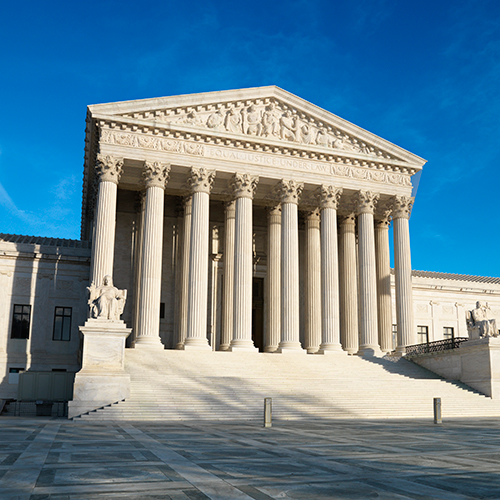Retention Elections for U.S. Supreme Court Justices? IAALS Weighs In
 In response to the end-of-term decisions from the U.S. Supreme Court on marriage equality and the Affordable Care Act (Obamacare), some presidential candidates are calling for changes to the life tenure that justices enjoy under Article III of the U.S. Constitution.
In response to the end-of-term decisions from the U.S. Supreme Court on marriage equality and the Affordable Care Act (Obamacare), some presidential candidates are calling for changes to the life tenure that justices enjoy under Article III of the U.S. Constitution.
Former Arkansas Governor Mike Huckabee is leading the charge for a limited, non-renewable term for Supreme Court justices, while U.S. Senator Ted Cruz of Texas has proposed that justices stand for retention in the second national election after their appointment and every eight years thereafter. Louisiana Governor Bobby Jindal’s suggestion, hopefully made in jest, is more extreme: “Let’s just get rid of the court.”
Huckabee is not the first to call for term limits for Supreme Court justices. In fact, a national, nonpartisan grassroots organization known as Fix the Court recently launched Come to Terms, an initiative seeking adoption of a constitutional amendment that would establish a single, 18-year term for the justices. But Cruz’s retention election proposal is a novel one, at least for federal judges. State court judges in 20 states stand for retention by the voters.
In a retention election, voters are asked whether sitting judges seeking additional terms should be retained in office, and at least a majority of “yes” votes is required for retention. Retention elections were first adopted as a component of a “merit selection” plan in the 1940s, to allow voters to hold judges accountable for their performance while preserving the independence and impartiality that contested judicial elections may threaten.
Retention elections fulfilled these purposes for many years, but over the last decade, we have seen a substantial increase in the number of politically motivated attacks on judges standing for retention, as well as in the amount of money spent in these races. Since 2006, sixteen anti-retention campaigns have been seen in 11 different states, and more than $15 million has been raised and spent in the last three election cycles alone. Retention challenges tend to be driven either by dissatisfaction with decisions on hot-button issues or by a broader desire to secure a more conservative judiciary.
George Will offered a voice of reason in the debate over Cruz’s proposal for the U.S. Supreme Court in a recent commentary: “Imagine campaigns conducted by justices. What would remain of the court’s prestige and hence its power to stand athwart rampant executives and overbearing congressional majorities?” But judges hitting the campaign trail—and potentially threatening the courts’ integrity and authority—has become a political reality in some retention election states.
To address this development, IAALS and Justice at Stake recently brought together a diverse group of leaders of national legal groups, representatives of business organizations, scholars, political strategists, fair courts advocates, and justices who have faced organized retention challenges. This Convening on the Future of Retention Elections focused on ways to make judicial retention elections more resistant to politicizing forces, as well as possible alternatives to retention elections to ensure judicial accountability. The Convening was only a first step, and little consensus was reached as to the “right” reforms. But a number of interesting and wide-ranging proposals were discussed, including campaign finance reform, better public education about the role of the judiciary, a single, non-renewable term for judges, retention followed by life tenure, and reappointment by the original appointing entity.
One proposal has already been implemented, with the Florida Supreme Court amending its code of judicial conduct to allow judges standing for retention to the same office to mount a joint campaign. Nearly all of the recent anti-retention campaigns have been waged against two or three justices on the ballot at the same time.
One point on which Convening attendees did agree is that a robust, broad-based judicial performance evaluation program, currently in place in 16 states, should be a component of any process to retain judges.


